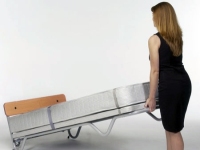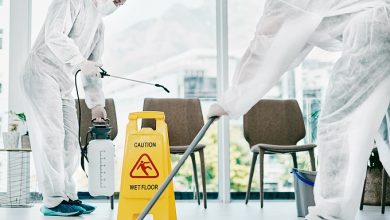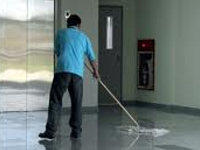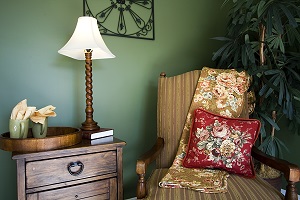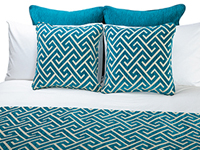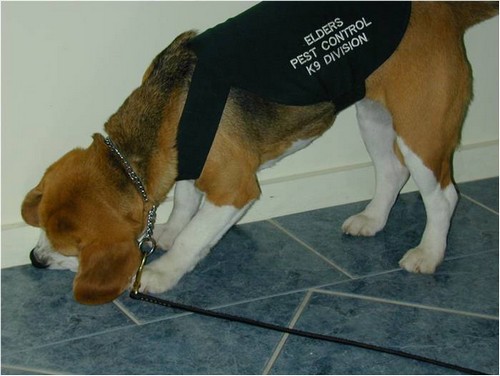
Bed Bugs: Getting on Top of Bed Bugs
Bed bugs continue to plague mankind. In fact they are more of a problem now than ever before.
Fifty years ago, it was believed that the dreaded bed bug had been wiped out by the pesticide DDT (dichlorodiphenyltrichloroethane) but this was banned worldwide in the 1970s and since then the tide of infestation by these creatures has become virtually unstoppable. A survey of Australian professional pest managers a few years ago revealed that bed bug numbers rose by an unprecedented 4500% since the start of the new millennium. The good news is infestations in Australia have not continued to increase in the exponential fashion that they did between the years 2000 and 2006.
It is a fact of life that the accommodation sector is the industry that suffers most. Bed bugs, specifically cimex lectularius, feeds on blood and human blood is its preferred flavour. Beds in hotels, motels, resorts, hostels and B&Bs have a ready and constantly renewing feast of guests’ blood available all packaged neatly ready for consumption every night. Those same guests also provide one of the principal vehicles for spreading the infestation – luggage.
Bed bugs seclude themselves into any crevice which is one of the main reasons they are so hard to eradicate. Bags and suitcases have plenty of spaces for a bed bug to lodge itself and be transported to the guest’s next overnight stop. Often this is to the guest’s own home.
One of the major problems in the early part of this decade was the reluctance by many accommodation providers to admit they had a bed bug problem for fear of the negative PR.
This often led to a lack of control and merely contributed to the increasing problem.
How will an accommodation provider know if his property has a bed bug problem? Certainly if the housekeeping team has not discovered the easy to see tell-tale signs on bed linen, then guests will certainly make the fact known. If bed bugs are suspected then
a licensed pest controller should be consulted. Do not attempt any DIY eradication projects as these are doomed to failure, sure to frustrate and could make the problem worse.

Steam cleaning a mattress with a Eurogem appliance
If you are still one of those managers that believe, as you are an upmarket property, you cannot be affected or infected, think again. Ask the Waldorf Astoria in New York. Three times in the past 12 months the five-star hotel has been sued after guests suffered trauma from bed bugs in its suites. A motel in the US was sued for $20 million after a guest suffered prolonged trauma after being bitten. In February, British Airways had to take a jumbo out of service to have it cleansed of the creatures after complaints from customers they were on the menu during a flight between India and Britain.
In this litigious society, a bed bug bite that usually only causes mild reactions physically can, for the purposes of a law suit, involve stigma, mental trauma and psychological stress plus resulting medical costs. So it is not just your bed sheets that could suffer but also your balance sheet – not to mention reputation.
The reality is every accommodation complex is at risk.
So how does one combat the menace? The control measures include prevention (largely impossible but mitigation and containment is possible), detection (just how widespread is the infestation in a building), eradication and post-eradication treatment.
Prevention and detection
Good housekeeping practices and a reduction in possible harbourages such as cracks and crevices will discourage infestations to some degree. This means regular inspections of furniture, wall hangings, curtains and even electrical sockets. Mattresses would appear to be designed especially for bed bugs with the edging being the perfect haven for feeding adults and eggs.
The huge global increase in bed bug infestations has seen many pest management devices being invented and marketed including mattress encasements and a range of traps, early warning systems, monitors and barriers. Regretably, the resurgence of bed bugs has seen a rise in the number of products claiming to control, prevent and even destroy bed bugs that fail to live up to the claims made. But some do what they claim.
For example, US company BedTrak has been developed a “patent pending” monitor that is inexpensive, effective and simple to use. The BedTrak is a monitor that can be used for early detection, ongoing monitoring and for post treatment inspections to ensure successful eradication of bed bugs in the hotel room.
There is no doubt that mattress encasements are an effective bed bug management tool and offer several advantages. For an infested bed, encasements can contain the infestation without the need to discard the mattress and the better quality encasements have an inbuilt membrane that bed bugs are unable to bite through. It is considerably cheaper to purchase an encasement than a new mattress! Encasements have no edge beading and so there are few areas for bed bugs to hide compared to the average mattress and ensemble that make great bed bug maternity wards.
Protect-A-Bed was the first company to commission independent research on its mattress encasements and work closely with leading entomologists to develop superior, quality-tested products. These encasements ensure protection from allergens, dust mites and bed bugs.
They are available for both mattress and box spring protection and these allergy control bedding prevent bed bugs gaining entry while significantly extending the life of the mattress.

Bed bug bites – just what your guests don’t want
A number of bed bug traps utilise mains power and power cords may not been seen as being desirable under the bed for risk of fire or around the room for the tripping risk.
Additionally, a few devices have a canister of compressed carbon dioxide and it may be probable that some hotels would not want a high pressure gas cylinder within their rooms.
Such devices may even have insurance implications.
One trap that does work is the Bed Bug Barrier which is designed to prevent bed bugs from accessing people (food) while they sleep. Bed bugs must climb into the bed if they are to find people and bite them and these special leg castor fittings will trap them on route to their prey.
As they climb the bed legs, the bed bugs crawl up into the unit and become stuck in the strong glue barrier inside. The barrier glue is safe, non-toxic and made from natural gums, oil and tree residue. The glue will last two years, after which replacement glue can cheaply and easily be added to the original barrier unit.
Self adhesive tapes are also available to use on bed heads, skirting boards, power points, electrical cords and air vents.
Bed bugs, regrettably, are usually detected first by the guest. But housekeepers should always be on the lookout for telltale blood drops on sheets, bed bug faeces and the distinctive odour of these insects. Thorough inspections of mattresses, beds, furniture, wall hangings (picture frame cords especially) and any nook and cranny in a room is advisable on a regular basis.
Accommodation providers should implement an inspection program to regularly seek out unknown bed bug infestations before they reproduce and spread – it’s far better that you find the infestation rather than your guest. A quarterly proactive inspection program should be conducted by a pest management firm well versed in bed bug control.
One of the best detectives in the search for bed bugs is specially trained sniffer dogs and bed bug control specialists, such as Elders, use these. They can detect the odour of bed bugs where nothing else can. It has been proven that a trained dog can detect a single bed bug in a room with 98% accuracy! And it can be quite a discreet way of detecting bed bugs without alerting guests.
Treatment
“What do you call a bed bug job that is 99.99% effective? A failure.” So says Jeff Eisenberg, author of The Bed Bug Survival Guide. The reason is that .01% will re-infect a guest room very rapidly. One female bed bug can produce 300 offspring in just six weeks!
Pesticides can be used to control bed bugs in the adult and larval stages. However, the current generation of bed bugs have developed a high resistance to most of the insecticides used today. Synthetic pyrethroids are often the main chemicals used for control in Australia but these are not very effective while carbamates and organophosphates are far more effective they may not be always recommended due to the residues that remain. Insecticides do not kill the egg stage of the bed bug life cycle which is why re-infection occurs.
Insecticide use needs to be used with extreme care and only by trained professional controllers.
Residual toxins from an insecticide used to control bed bugs in a Thai hotel room are being blamed for the death of a New Zealand traveller earlier this year. She died in hospital from a heart inflammation two days after she and two friends allegedly became sick while staying at the Downtown Inn in Chiang Mai. Seven people have died in similar circumstances – including a Canadian tourist, an elderly British couple and a Thai tourist guide, after using the facilities of the Downtown Inn. Tests found traces of a poison called pyrophus used in insecticides and which is banned in some countries for use indoors.
Bed bugs can survive a wide range of temperatures and atmospheric compositions. Below 16.1°C, adults enter semi-hibernation and can survive for long periods. Bed bugs can survive for at least five days at −10°C but will die after 15 minutes of exposure to −32°C. But all stages of the bed bug life cycle are killed by exposure to 46°C, making steam or heat treatment the most effective way of eradicating bed bugs. Apart from being safe and chemical free and far more effective than any other treatment, heat treatment provides quicker re-occupancy to the room.
However a combination of pesticides and heat treatment is recommended for the best chance of eliminating the vampires. Now matter how thorough such a program is, it is likely that some eggs and even adults will remain ready to re-infest. A repeat of the treatment is always recommended.
Elders Pest Control, which has spent considerable time and money on research and development of a specialist heat machine (patent pending) to eradicate the pest from the accommodation industry, promotes a one-day room down time using its new methods. This compares with a 10 to 20 day room down time for a straight chemical process.
Carrying out the heat treatment is relatively quite simple: The room is prepped by a pest controller and the heat machine setup in the room. Wireless thermometers are placed throughout the room and the results are fed live to a laptop outside the room to ensure the thermal death-point is reached.
The use of steam as part of an ongoing housekeeping process does reduce the risk of re-infection. Eurogem steam cleaners, for example, produce a 102°C jet of constant steam – hot enough to wipe out dust mites, fleas and importantly bed bugs yet it’s kind to surfaces and cools in seconds. Steam kills eggs and all, breaking the breeding cycle in one quick application.
The use of dry steam for treating bed bugs is becoming more popular as it is less intrusive than traditional insecticide extermination methods.
Where insecticides result in lengthy room closures, dry steam simply requires a thorough cleaning approach that usually takes between one to two hours per room. Therefore the use of steamers can prove invaluable during peak times when rooms are at booked at full occupancy.
Post eradication control
A bed bug management policy should be developed. Having a bed bug policy in place will ensure that the proper processes are undertaken that, in the long term, will save money and hopefully reduce the risks of litigation. The key areas within this policy include: education, documentation, occupational health and safety, eradication processes, bed bug prevention and handling the media.
The second measure that a business can take to limit the affects of bed bug infestations is to implement regular employee training, particular for housekeeping staff. This training should be undertaken by a pest management firm and is usually included as part of a proactive bed bug inspection program.
Training on a six month or annual basis provides new and existing staff with information on how they can play a key part in the bed bug management process.
To ensure ‘best practice’ in bed bug management, the Code of Practice for the Control of Bed Bug Infestations in Australia should be consulted. This is a freely available document from www.bedbug.org.au and aims to promote best practice in the eradication of active bed bug infestations and the management of potential infestations.
Watch your bottom line
This case study compares the cost of a traditional chemical treatment (carried out in accord with the Australian Bed Bug Code of Practice) of an infested guest room compared with the Elders’ bed bug heat treatment:

*Example only. Rates prices and out of service times may vary and that would alter your saving amount.
Infection concerns
Bed bugs carrying potent drug-resistant staph bacteria have been found in Vancouver, Canada, according to a report released by the US Centres for Disease Control and Prevention.
Five bed bugs were plucked off the bodies of three hospitalised patients were tested and found to be infected with methicillin-resistant staphylococcus aureus (MRSA) and vancomycin-resistant Enterococcus faecium (VRE), said the CDC’s Emerging Infectious Diseases report.
It was unclear whether the people infected the bugs or the bugs infected the people.
“To our knowledge, no conclusive evidence has demonstrated disease transmission by bed bugs,” said the study, which called for further research due to the admittedly small sample of patients.
MRSA is a staph infection increasingly seen in hospitals that can turn deadly if it gets into the bloodstream or a surgical wound. VRE is a type of bacteria that can live on the skin and in the intestines without harming a person but can cause serious health issues in people who are ill or have weakened immune systems.
Both bacteria have developed resistance to many antibiotics.

AccomNews is not affiliated with any government agency, body or political party. We are an independently owned, family-operated magazine.

